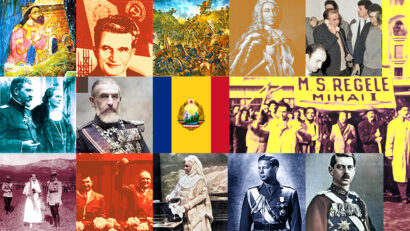The National Cathedral
Historian Ionuț Biliuță looks back at how the idea to build a national cathedral was born and why the project took so long to be realised.

Steliu Lambru, 10.11.2025, 14:00
The modernisation of Romanian society, which began in the 1800s, led to state independence in 1877 and the proclamation of the kingdom in 1881. The church was also undergoing a process of modernisation in all respects, including the construction of new places of worship. Orthodox churches were traditionally small in size, even those in cities. The idea of a cathedral was linked to the Catholic and Protestant world in the West and was rooted in the Middle Ages, during the period described by historians such as Georges Duby as the “time of cathedrals”. Thus, the modernisation of the Romanian lands, the connection of local spirituality to the Western world also inspired the construction of bigger churches. The Romanian monarch, who was of German origin, brought over many ideas and fashions from the West, so the idea of building larger religious sites than Romanians were used to arose naturally. That’s how the plan to build a national cathedral for Romania’s Orthodox Christians, who were the majority, was born.
It wasn’t however until October 26, 2025, that a National Cathedral was eventually built in the capital Bucharest. Senior church officials and state representatives attended the consecration of its painting. Historian Ionuț Biliuță tells us more about the idea of building such a monumental edifice in a predominantly Orthodox world:
“The idea of a National Cathedral, I will not use the name the ‘cathedral of the salvation of the nation’, arose sometime at the end of the 19th century and came from the Royal House of Romania, more precisely from King Carol I. For the first time, the idea of a national cathedral is stipulated in a bill submitted by King Carol I in 1884 to the Legislative Chamber. By law, 5 million gold lei were allocated for the construction of a national cathedral in Bucharest, which at that time represented 5% of the budget of the Kingdom of Romania. It was a phenomenally large sum. In 1891, the government led at that time by General Ioan Emanuel Florescu even held a competition, an international design contest, for such a cathedral. In the meantime, the project became obsolete and the question arose again in 1900. This time, the Minister of Religious Affairs Constantin Istrate proposed to the Holy Synod at a meeting held on May 11, 1900 to take responsibility for building a national cathedral and to finance its building through its own sources and public contributions.”
The First World War makes the idea for a national cathedral more stringent, with the creation of Greater Romania at the expense of the lives of hundreds of thousands of Romanians lending the project even more symbolic significance. Ionuț Biliuță:
“After the Great Union of 1918, it was the former bishop of Caransebeș, Miron Cristea, who, together with King Ferdinand, revived the idea of the need for a national cathedral. In response to a petition by King Ferdinand the Holy Synod on May 10, 1920, he tried to build a monumental church in Bucharest that was supposed to act as a national cathedral. This was basically the start of the idea of a Cathedral of the salvation of the nation. However, there is some confusion among the public and the media today as what salvation meant. It referred both to the military campaigns of 1877 that led to independence and the creation of the Romanian Kingdom in 1881, but also to the fulfillment of the dream of building Greater Romania and, therefore, to the salvation, that is, the liberation of the Romanians in the territories occupied by the former empires from the foreign yoke. This is what the idea of the salvation of the nation refers to. Another important step will be taken in 1926, in February, during a meeting of the National Church Council. This time, the institution of the Romanian Patriarchate had already been created. The intention is expressed to find a site for this cathedral, together with the City Hall of the Capital. Earlier, in 1929, Miron Cristea had established the site of the future national cathedral at the base of the Metropolitan Hill in Bucharest. But its construction, due to the difficulties of the Second World War, but also, previously, to the economic crisis at the end of the 1920s and the beginning of the 1930s, was postponed indefinitely.”
History would again stand in the way to the project of a national cathedral. After 1945, the communist regime, who was profoundly hostile to religion, could not possibly envisage building such a structure. After the fall of communism in 1989, the idea resurface. Historian Ionuț Biliuță:
“The project was resumed in February 1995 by Patriarch Teoctist, who proposed the central authorities and other state authorities this idea of building an Orthodox cathedral in Bucharest. On February 5, 1999, he went on to choose a site for the cathedral, consecrating a cross in the park in Union Square. In time, the idea to build the cathedral there would be abandoned for reasons that had to do with the position of the structure and the topography of Bucharest. The choice of the current site of the National Cathedral was made by the Bucharest City Hall, which in a document dated February 16, 2005, decided, with the Patriarchate’s approval, that the most suitable place for the construction of a national cathedral was Arsenal Hill, the current location.”
The National Cathedral is now finally standing and many see it as a new beginning.






























